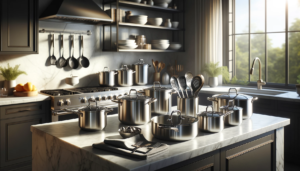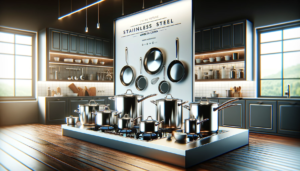Is your cookware ruining your recipes or even worse – your health?
Choosing between stainless steel versus copper pots and pans involves weighing factors like temperature precision, maintenance, aesthetics, and potential metal leaching over time.
Let’s dive into a full comparison of stainless steel cookware versus copper to determine the better material for your kitchen.
Heat Conductivity
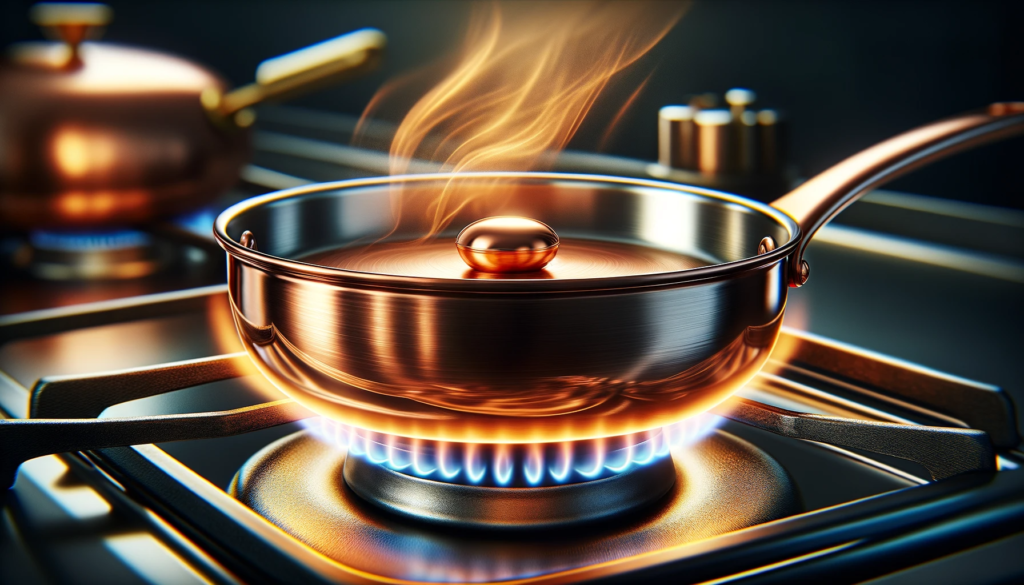
Copper is considered the best heat conductor among popular cookware materials.
This means that a copper pan heats up quickly and also cools down fast.
The excellent conductivity allows the cookware to distribute heat evenly across the cooking surface.
As a result, food cooks uniformly with no hot or cold spots.
Copper’s superior heat control and distribution enable more precise cooking for delicate ingredients that require careful temperature regulation.
For example, copper works well for making candy, sauces, or simmering milk without scorching.
The responsive heating lets cooks make quick adjustments.
Stainless steel has poorer heat conductivity compared to copper.
A stainless steel pan generally takes longer to heat up initially.
The cookware also retains heat longer after the stove is turned off.
This can complicate timing and lead to overcooking.
For instance, a stainless steel pan may overbake a pizza or casserole even after getting removed from the oven since it stays hotter for longer.
While useful in some cases, this heat retention causes challenges for recipes needing temp control.
Due to uneven heat distribution, stainless steel pans are more likely to develop hot spots that burn food.
For finicky dishes, stainless steel is less ideal for cooking items that require careful temperature regulation compared to copper.
Reactivity

Copper tends to react to some acidic or alkaline foods during the cooking process.
Highly acidic ingredients like tomatoes, vinegar, wine, fruit juices, or milk products can cause the release of copper molecules into the food over extended cooking times.
Some copper absorption is harmless, but larger amounts can cause nausea, vomiting, diarrhea and other symptoms if consumed regularly.
To prevent this leaching effect, the interior of copper pans is usually lined with tin or stainless steel.
However, the protective lining can get scratched or damaged over time with metal utensils, exposing the copper below.
If the lining degrades, reactions occur with food contents, leading to metallic contamination during cooking.
Stainless steel, especially the 304 and 316 varieties used for cookware, are largely inert.
This means stainless steel does not react with most food items during the cooking process.
As a result, users do not have to worry about metallic contamination or absorption with stainless steel, even for long simmering acidic recipes.
It provides consistent, safe results across a wide range of cooking tasks spanning quick sears to all-day braising.
The inert quality also makes stainless steel easier to clean without special maintenance between uses.
You can switch from cooking tomatoes to eggs without needing to re-tin or protect the surface.
It offers reliable versatility for any ingredients.
Durability
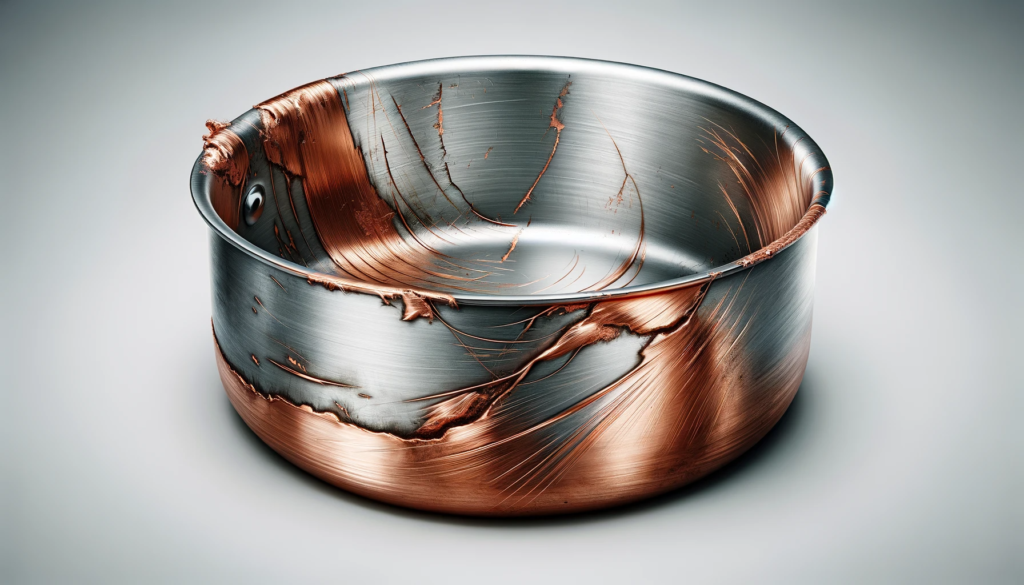
Stainless steel offers excellent durability for a cookware material.
Pans and pots made from stainless steel can withstand a lot of wear and tear from daily cooking tasks over many years.
Stainless steel is highly resistant to warping, denting, corrosion, scratching, and other types of damage under normal usage.
This allows the cookware to reliably maintain its original form when properly cared for.
In addition, most stainless steel pans feature impact-bonded bases that encase and protect reactive core metals like aluminum or copper.
This cladding prevents degradation while allowing good heat conductivity.
Many stainless options come with lifetime warranties due to this durability.
Copper is a softer metal, making copper cookware prone to warping and denting over years of repeated use.
Copper tends to expand and contract during heating and cooling cycles.
These temperature fluctuations that occur with each cooking session can cause deformation over time, especially with thinner copper pans.
In addition, the softness of copper makes it easier to scratch or ding with metal cooking utensils or abrasive cleaning.
Without careful handling, copper cookware will show significant signs of wear much sooner than stainless steel.
However, higher-quality copper pans with thicker walls provide greater resilience against denting or scratching.
But longevity remains a key advantage of stainless steel.
Weight
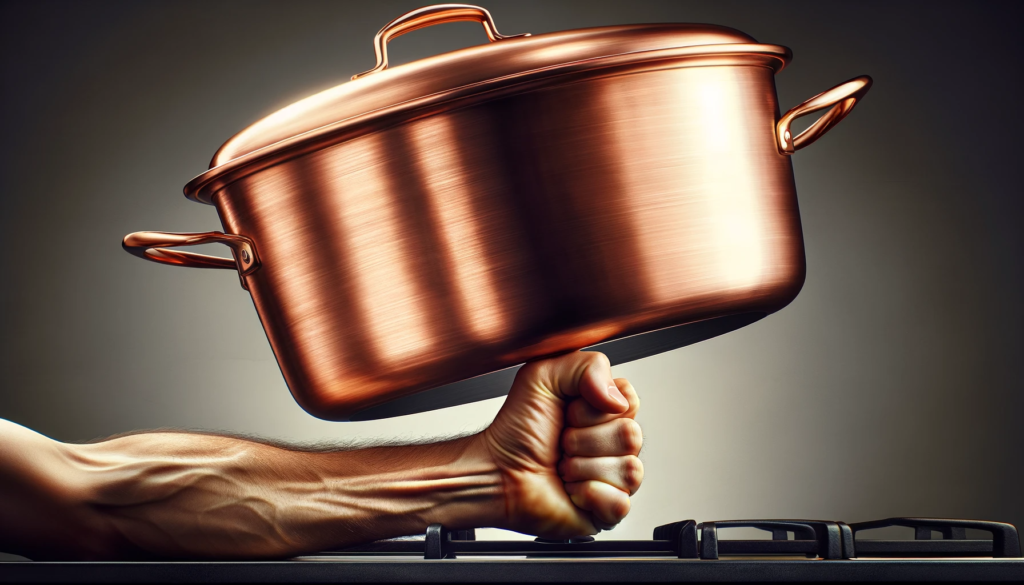
An obvious downside to copper pans is the greater weight compared to stainless steel and other popular cookware materials.
Copper has nearly double the density of steel, making an equivalently sized pan significantly heavier.
For example, a 10-inch copper skillet can weigh 6 pounds or more, whereas a steel skillet is under 3 pounds.
This increased heft impacts the ease of handling copper cookware during cooking tasks.
Lifting and moving heavier pans in and out of the oven or around the stove can lead to wrist or arm strain over time after repeated use, especially for those with joint issues.
This may preclude larger one-pan recipes.
By contrast, stainless steel cookware is lighter for a given volume.
While stainless steel is denser than aluminum, it remains far less heavy than copper at typical cookware thicknesses.
This means most stainless pans and pots, even with clad bottoms, are easy to lift and manipulate during all kinds of cooking jobs.
A lightweight frying pan encourages tossing foods.
The lighter stainless steel weight also makes pieces simpler to retrieve from low cabinets and safer to handle when pulling hot pans from ovens.
For those concerned about maneuverability due to strength limitations or kitchen layouts, stainless steel delivers huge comfort and accessibility advantages over heavier copper.
Appearance
One area where copper cookware clearly bests stainless steel is visual appeal.
Copper has an inherently attractive look seldom matched by other metals used for cookware.
The distinctive orange-hued shine and smooth surfaces make copper pans and pots stand out beautifully in any kitchen.
This high-end metallic appearance drives copper’s popularity in upscale kitchens where aesthetics matter just as much as utility.
The vivid beauty of copper often features as a decorative element for adding warmth and flair.
The unique color pops against stainless fridges, ovens, and other appliances.
By nature, stainless steel has a more utilitarian, industrial look compared to other metals used for cookware.
Brushed and polished stainless finishes lack the artistic flair of copper visuals.
While some higher-end stainless steel manufacturers do apply externals with a bit more mirror-like polish, stainless interiors maintain a basic metallic appearance.
Uncoated stainless steel rarely serves an aesthetic role beyond basic function.
For those desiring cookware that also elevates decor with artistry, stainless steel lacks copper’s natural vibrancy.
However, stainless steel matches a wider range of kitchen decors given its neutralness.
But make no mistake – copper brings far more eye-catching elegance.
Cost
One of the main barriers to choosing copper over stainless steel cookware comes down to price and budget constraints.
Copper commands premium pricing due to its superior heat responsiveness, attractive looks, and reputation as a high-end material.
Customers can expect to pay at least four times more for an equivalently sized copper pan versus a stainless steel option.
For instance, an 8-inch stainless steel skillet may cost $20, whereas a comparable copper skillet starts around $80 or more.
While prices depend on piece quality, thickness, brand, and exact materials, copper consistently sits at the top end of cookware costs.
This places complete sets totally out of reach for many households.
Alternatively, stainless steel pans and pots retail at highly affordable rates for most shoppers.
Mass manufacturing techniques keep pricing low on quality stainless steel cookware, even from well-known makers like All-Clad and Cuisinart.
Full cookware sets made of stainless steel trend around $200 to $500 for more well-known brands with 15+ pieces needed to outfit a kitchen.
Piece counts for these inexpensive sets often reach upwards of 20+ for full kitchen outfitting.
For budget-focused buyers lacking funds for premium cookware, stainless steel provides excellent value compared to pricier choices like copper.
And basic stainless sets with lighter gauge metals can cost under $100.
Cleaning
Cleaning and care require special attention for copper cookware to prevent damage and maximize longevity.
Copper reacts to a number of cleaning agents, including bleach, ammonia, and abrasives.
Instead, cooks have to use gentle products designed for copper that lack harsh chemicals.
In addition, traces of acidic ingredients can corrode copper over time if not promptly removed after cooking.
Specialized copper cleaner or polish helps strip away reactive residues before they can pit or oxidize surfaces.
Sweat and oils from hands can also degrade exterior copper hue, necessitating careful hand washing habits to avoid fingerprint smudges and staining.
In contrast, stainless steel cookware has fewer cleaning limitations or special requirements.
Stainless steel stands up well to a wide range of typical dishwashing products without adverse reactions or damage.
Users do not have to search out stainless-specific cleaners.
Cooks also need not worry about harming durable stainless surfaces or finishes with normal scouring pads and brushes.
Thanks to stainless steel’s resilient, inert qualities paired with scratch resistance, keeping pans and pots looking like new requires minimal maintenance compared to fussy copper.
To restore appearances, stainless steel can be safely scrubbed with baking soda.
This delivers added convenience for busy cooks who want to avoid delicate handling.
Health Concerns
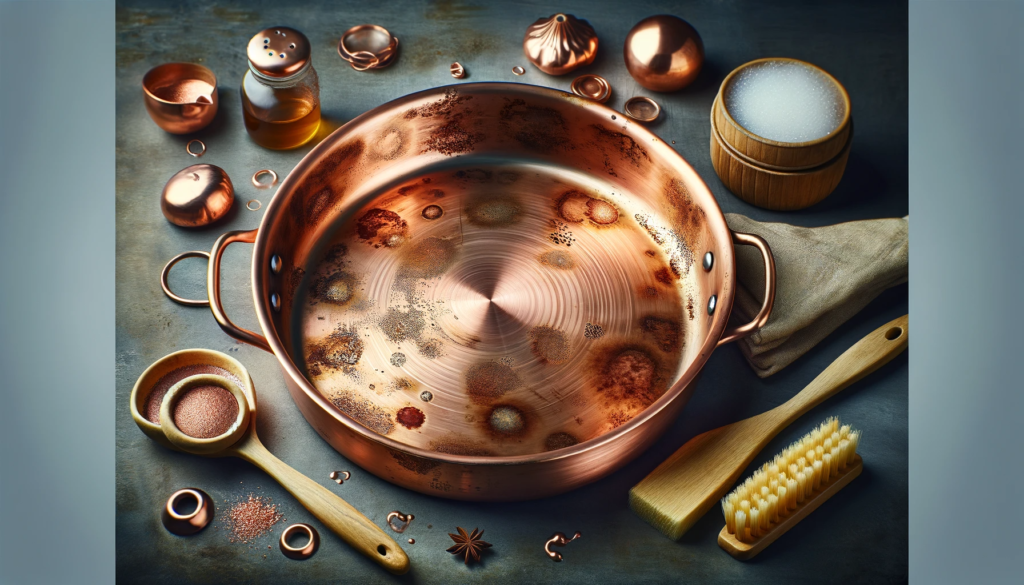
One possible downside to cooking with copper entails certain health risks over extended use spanning months or years.
As explained regarding reactivity, copper can leach from cookware into acidic foods if exposed through damaged linings or scratches accumulated over repeat use.
Consuming very high amounts of copper regularly over such long periods can lead to gastrointestinal issues like nausea, vomiting, or diarrhea as initial symptoms.
With chronic overages, copper toxicity can then progressed to liver damage, kidney dysfunction, anemia and other problems in more severe cases.
While trace copper provides nutritional benefits normally, excessive accumulation causes toxicity.
Children also face higher sensitivity to copper overconsumption disproportionate to body mass.
When buying stainless steel cookware, consumers never need to worry about metallic leaching or contamination under ordinary circumstances over any timeframe.
Even with thousands of hours cooking over years, the steel alloy has no harmful reactions with food contents.
Stainless steel provides reliable safety across all cooking applications, whether boiling pasta sauce for hours or blackening fish.
The totally inert nature of stainless steel makes it suitable for delicate diets like pregnancy or with metabolic conditions with no concerns over trace metals or other impurities impacting health down the line.
This offers reliable peace of mind unmatched by reactive cookware materials subject to leaching like copper over extensive use.
Conclusion
In the end, both stainless steel and copper cookware have tradeoffs across considerations like cost, longevity, appearance, and safety.
For most home cooks, affordable and durable stainless steel delivers reliable versatility for everyday cooking.
But serious cooks valuing responsive temperature control and eye-catching beauty may still prefer a copper set.

